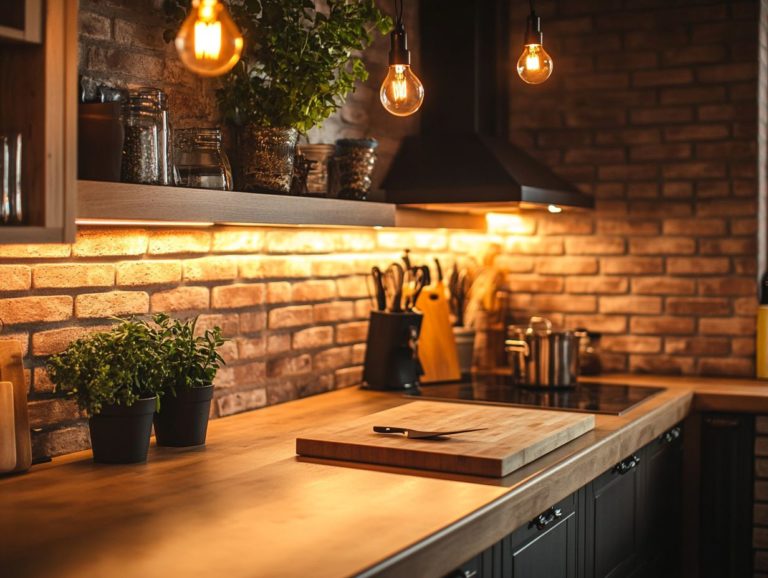The Role of Lighting in Kitchen Safety
Proper lighting in the kitchen transcends mere design; it stands as a crucial element of safety and functionality.
Effective lighting plays a key role in preventing accidents, from slips and falls to kitchen mishaps, ensuring that your culinary space is both welcoming and secure.
This article delves into common kitchen hazards and illustrates how strategic lighting can help alleviate them. It also examines different types of lighting and offers expert tips for optimal placement and maintenance, empowering you to cultivate a safe and beautifully illuminated kitchen environment.
Contents
- Key Takeaways:
- The Importance of Proper Lighting in the Kitchen
- Common Kitchen Hazards and How Lighting Can Help
- Types of Lighting for Kitchen Safety
- Tips for Properly Lighting Your Kitchen
- Maintaining Safe Lighting in the Kitchen
- Frequently Asked Questions
- What is the importance of proper lighting in the kitchen for safety?
- What are the main types of lighting used in the kitchen?
- How can proper lighting in the kitchen prevent accidents?
- What are important safety measures for kitchen lighting installation?
- How can dimmer switches enhance kitchen safety?
- What are tips for maintaining safe and effective kitchen lighting?
Key Takeaways:
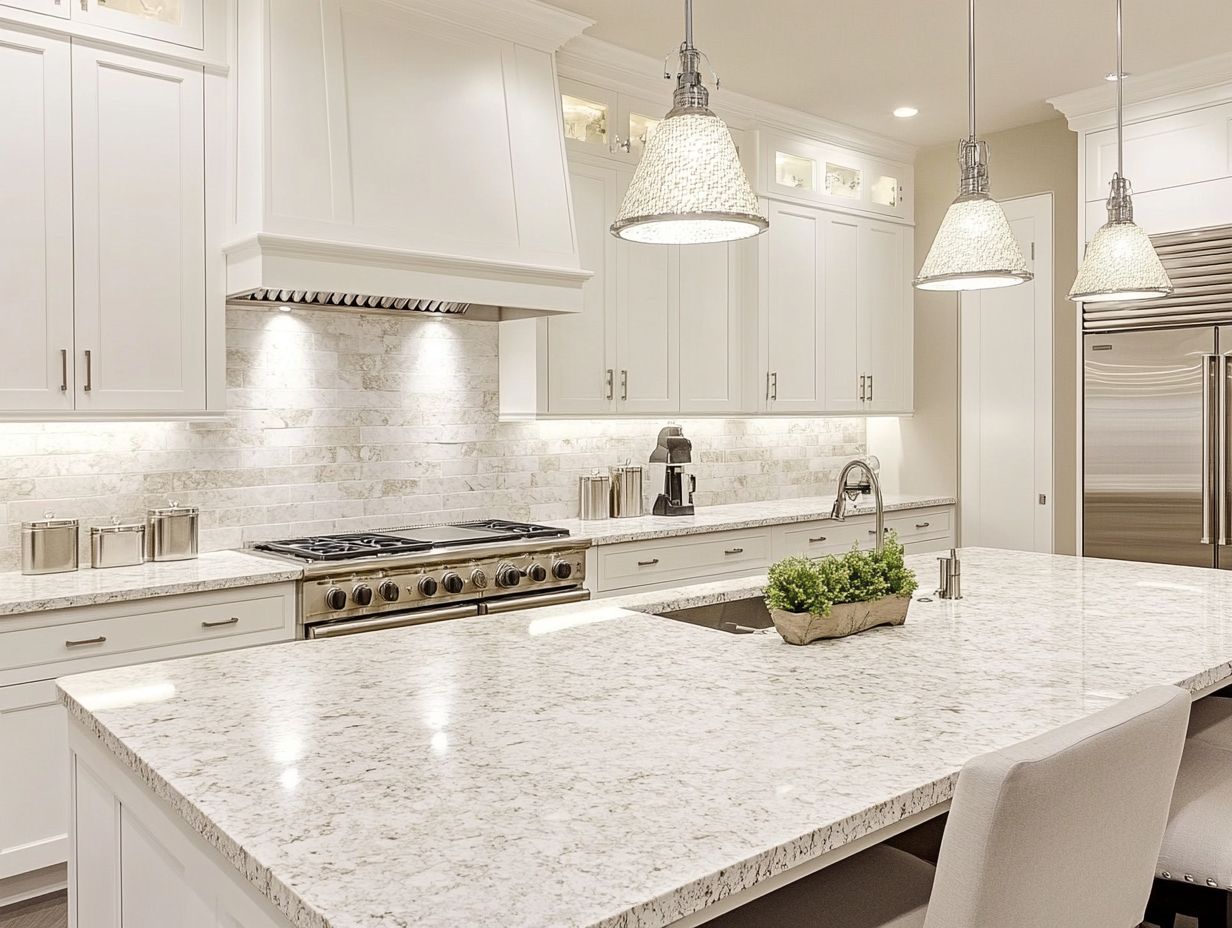
Good kitchen lighting is crucial for a safe cooking environment. Good lighting can prevent common hazards such as slips, trips, and burns. Task lighting, which is bright light focused on specific work areas, and ambient lighting, the overall light in the room, are both important for creating a well-lit and safe kitchen space. Make sure your kitchen shines bright and safety becomes second nature!
The Importance of Proper Lighting in the Kitchen
In a commercial kitchen, the significance of proper lighting is paramount. An effective lighting system is crucial for maintaining safety and efficiency during food preparation.
Striking the right balance between task lighting and ambient lighting improves visibility and fosters a well-designed kitchen that meets safety standards and promotes energy efficiency.
With the growing adoption of LED lights, you can achieve optimal illumination levels while minimizing maintenance costs and ensuring compliance with food safety regulations.
Why Good Lighting is Essential for Safety
Good lighting is essential for safety in a commercial kitchen, directly affecting visibility and compliance with safety standards set by organizations like OSHA.
When the illumination isn’t up to par, the risk of accidents rises significantly, leading to serious injuries among kitchen staff. Well-lit work areas empower cooks and food handlers to see their tasks clearly, allowing them to manage sharp utensils and hot equipment with confidence.
Appropriate lighting directly impacts food safety by making it easier to spot spoilage and contamination risks, ultimately protecting against foodborne illnesses.
This vital aspect of kitchen management creates a safer workplace and cultivates a more efficient and organized culinary environment.
Common Kitchen Hazards and How Lighting Can Help
In a commercial kitchen, numerous hazards can greatly affect both food preparation and worker safety.
By ensuring proper lighting, you can effectively mitigate these risks and uphold compliance with safety standards.
Preventing Slips, Trips, and Falls
Preventing slips, trips, and falls in your kitchen hinges on effective lighting systems to ensure adequate visibility. When your kitchen is well-lit, you significantly reduce the risks posed by dark corners and shadows that can hide hazards like spills or uneven surfaces.
This enhanced visibility transforms your kitchen into a safer haven for everyone, making navigation easier for both workers and guests.
By minimizing shadows and dark areas, the chances of accidents drop dramatically, contributing to an overall safer space.
With the right lighting, you can keep maintenance costs under control; efficient systems tend to use longer-lasting bulbs and consume less energy, creating a well-lit area that is both economical and safe.
Reducing Cooking Accidents
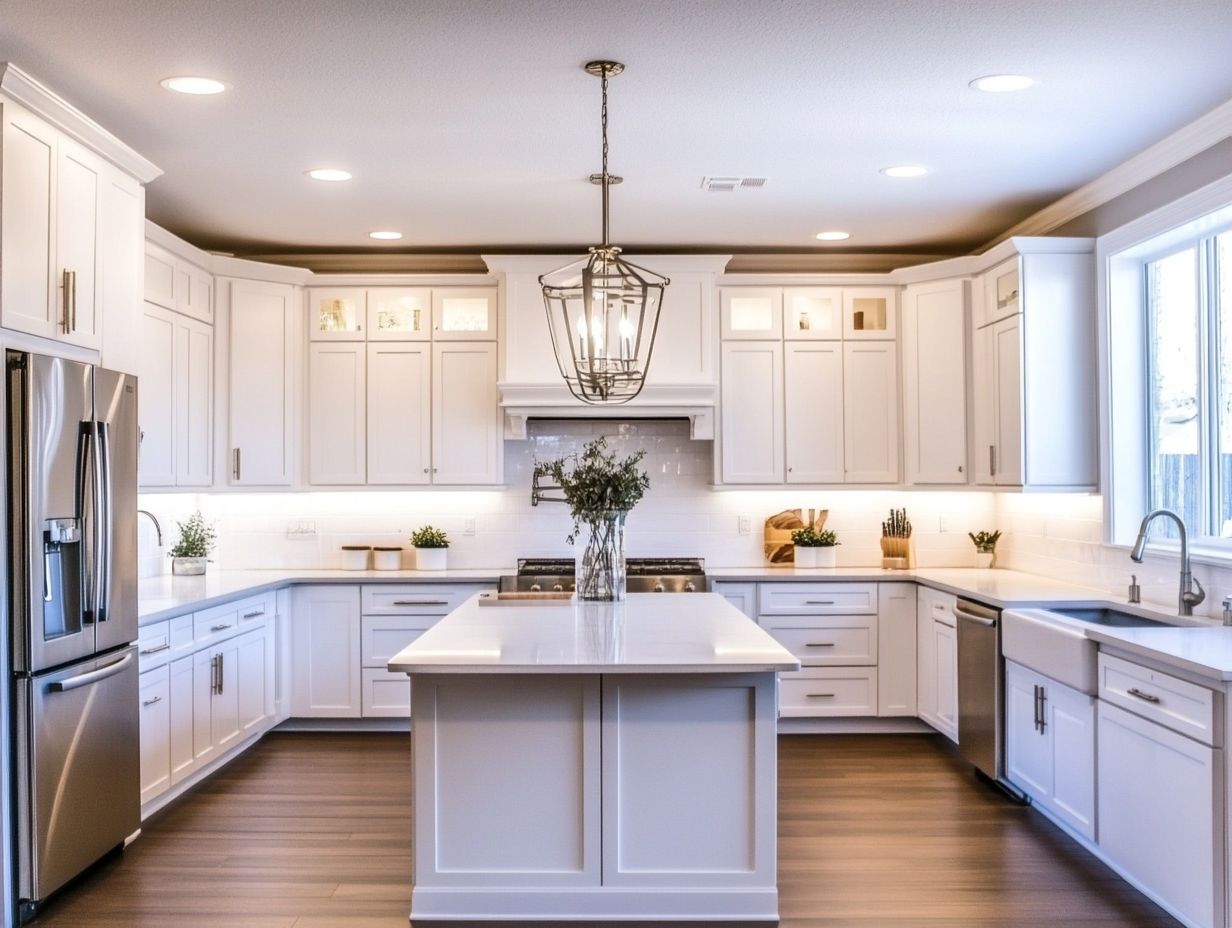
Reducing cooking accidents in a commercial kitchen is essential, and one effective strategy involves utilizing appropriate task and ambient lighting.
These lighting types boost visibility during food preparation and ensure you see your cutting surfaces, cooking equipment, and ingredients clearly.
In the fast-paced environment of a kitchen, shadows can pose significant hazards, making it crucial to install bright, well-placed LED fixtures that effectively illuminate your workstations.
By employing the right lighting, you adhere to safety standards and empower yourself to work with confidence, free from the fear of mishaps.
Enhanced illumination is vital in preventing injuries, as it helps distinguish sharp utensils and hot surfaces, ultimately leading to a safer cooking experience.
Types of Lighting for Kitchen Safety
In a commercial kitchen, various types of lighting fixtures—task lighting, ambient lighting, and emergency lighting—are crucial for safety during food preparation and cooking.
Each type serves its unique purpose, working together to create an environment where efficiency and security go hand in hand.
Task Lighting
Task lighting is essential for providing focused light over areas dedicated to food preparation and cooking. It significantly enhances visibility and safety.
This specialized lighting minimizes shadows and lets your kitchen staff clearly see ingredients, utensils, and cooking surfaces, reducing the risk of accidents.
Place task lighting strategically above countertops, stoves, and workstations. This ensures that every detail is visible, enabling greater precision in chopping, measuring, and plating.
Good lighting improves the quality of food preparation, leading to more consistent results and a safer cooking environment. Invest in effective task lighting to transform your kitchen into a more efficient and enjoyable workspace.
Ambient Lighting
Ambient lighting is a key aspect of kitchen design. It provides general illumination that enhances the overall atmosphere while promoting energy efficiency in a commercial setting.
This type of lighting allows your staff to navigate safely and efficiently and impacts food preparation and presentation.
Thoughtfully incorporate ambient lighting solutions to minimize shadows and highlight essential work areas. This enables chefs and kitchen staff to perform their tasks with greater precision.
Choose energy-efficient lighting options, like LED fixtures, to significantly reduce electricity consumption. This allows your commercial kitchen to operate sustainably while maintaining a bright and welcoming environment.
The right ambient lighting creates functionality and an inviting ambiance, benefiting both employees and customers.
Accent Lighting
Accent lighting adds elegance to kitchen design. It enhances visibility while drawing attention to specific areas and features within your commercial kitchen. This lighting is not just functional; it also crafts the mood and ambiance of the space.
Place LED strips under cabinets or above workstations to create a warm, inviting atmosphere that encourages cooking and entertaining.
Accent lighting can showcase stunning backsplashes, exquisite cookware, or beautifully arranged fresh produce on countertops.
Its versatility merges practicality with artistry, transforming a thoughtfully lit kitchen into a delightful workspace and a visual feast, elevating the experience for everyone who enters.
Tips for Properly Lighting Your Kitchen
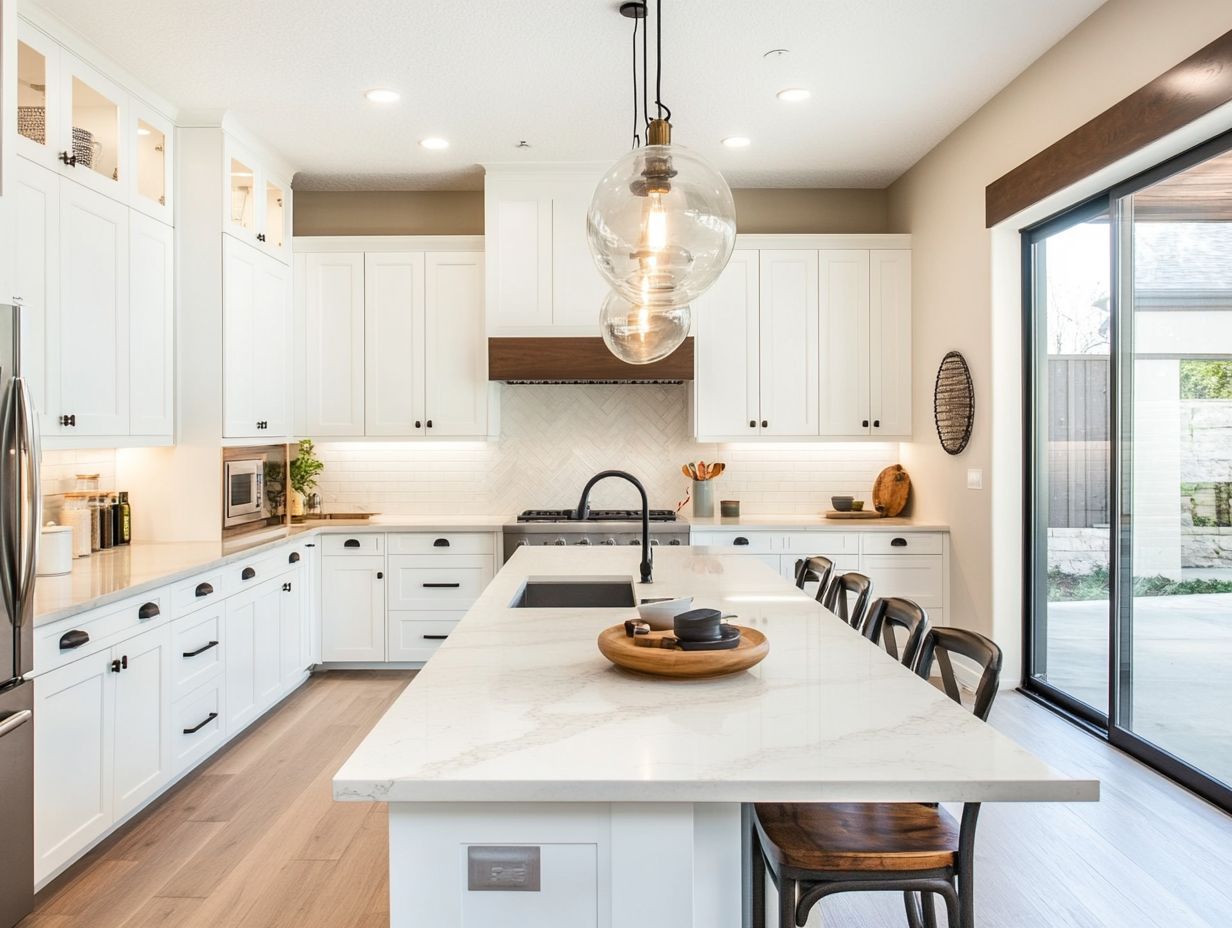
To achieve optimal lighting in a commercial kitchen, pay attention to placement, follow brightness recommendations, and utilize lighting controls.
This approach enhances visibility and ensures energy efficiency throughout your kitchen space.
Placement and Brightness Recommendations
Placement and brightness recommendations are vital for meeting the visibility and safety standards that a commercial kitchen demands.
Position lights thoughtfully above workstations and walkways to ensure every corner is well-lit, significantly reducing the risk of spills and slips.
Strategically placed fixtures elevate the overall ambiance and draw attention to crucial areas like cooking stations and storage spaces.
Maintaining optimal brightness levels is critical. Dimly lit areas can slow down response times during busy service hours.
Use adjustable lighting options to adapt to various needs, creating an environment where your staff can operate efficiently and safely.
Grasping these guidelines helps create a functional and secure workspace.
Maintaining Safe Lighting in the Kitchen
Make it a priority to regularly check your lighting fixtures. This ensures compliance with safety standards and helps you manage maintenance costs effectively.
By prioritizing this aspect, you create an environment that is both safe and efficient.
Regular Maintenance and Upkeep
Regular maintenance and upkeep of lighting fixtures in your commercial kitchen are essential for energy efficiency and safety standards.
This practice helps reduce energy consumption and improves visibility, significantly lowering the risk of accidents.
By conducting regular inspections—checking for flickering lights or burnt-out bulbs—you can prevent potential hazards and enhance productivity.
Keeping diffusers and lenses clean and free from grease buildup is crucial; it boosts light output and ensures a pleasant working environment.
Integrating energy-efficient LED lighting slashes electricity bills and promotes a sustainable kitchen operation, aligning with modern environmental practices.
Frequently Asked Questions
What is the importance of proper lighting in the kitchen for safety?
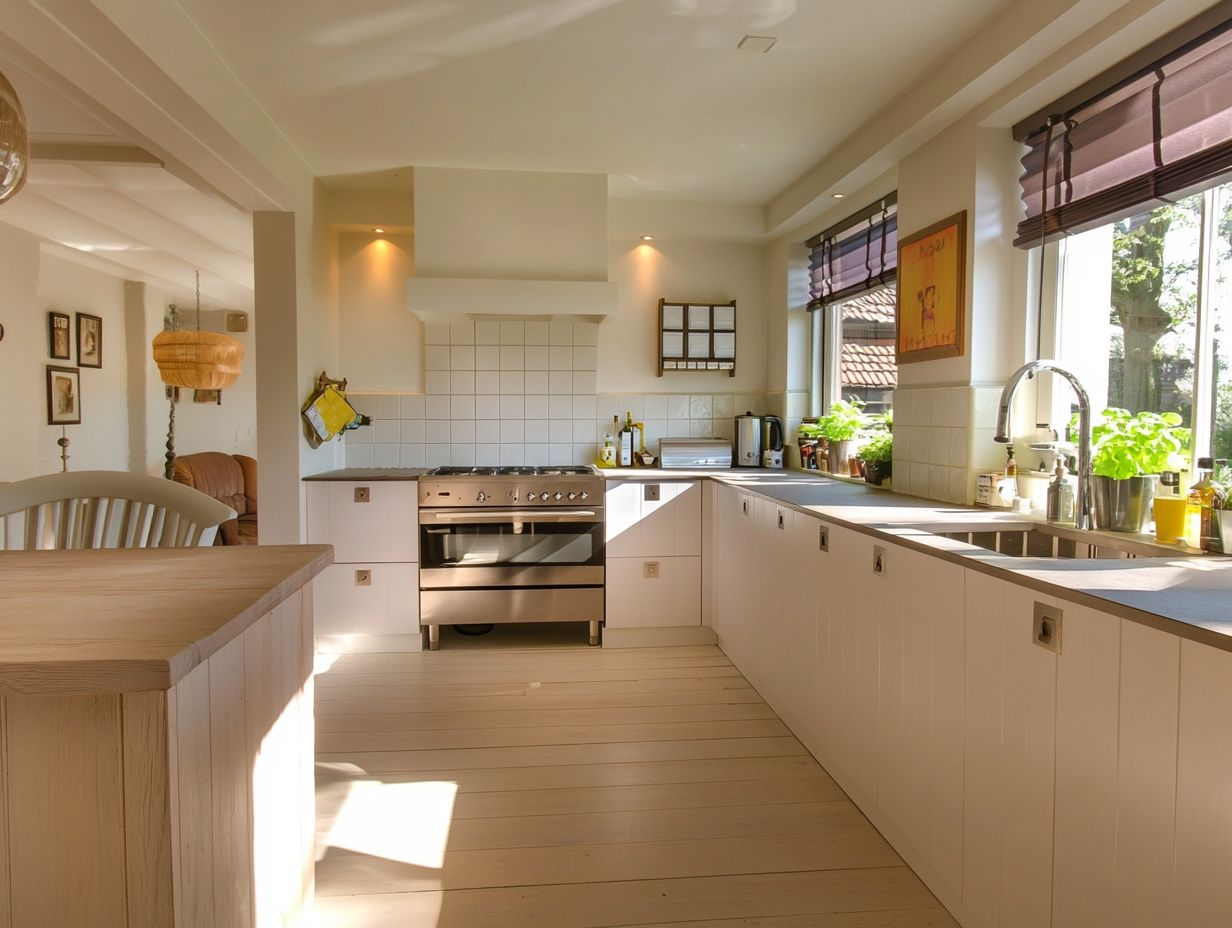
Proper lighting in the kitchen helps identify hazards and prevents accidents. It ensures better visibility for tasks like chopping, cooking, and cleaning.
What are the main types of lighting used in the kitchen?
The main types of kitchen lighting are:
- Ambient lighting: Provides overall illumination.
- Task lighting: Focuses on specific work areas.
- Accent lighting: Adds visual interest and ambiance.
How can proper lighting in the kitchen prevent accidents?
Good lighting makes it easier to spot hazards like spills, sharp objects, and hot surfaces. It also helps reduce eye strain and fatigue, minimizing the risk of accidents.
What are important safety measures for kitchen lighting installation?
When installing kitchen lighting, consider:
- Using the correct wattage for bulbs.
- Keeping fixtures away from water sources.
- Ensuring all wiring is done by a professional to avoid electrical hazards.
How can dimmer switches enhance kitchen safety?
Dimmer switches allow adjustable lighting levels, which can be beneficial during meal prep when bright lighting is required, but lower light may be preferred for dining.
What are tips for maintaining safe and effective kitchen lighting?
Maintain safe lighting by regularly cleaning fixtures and replacing burnt-out bulbs. Avoid placing fixtures too close to heat sources, and consider using LED or CFL bulbs for energy efficiency and longevity.
Boost your kitchen safety today! Schedule your kitchen maintenance to ensure safety and efficiency!





